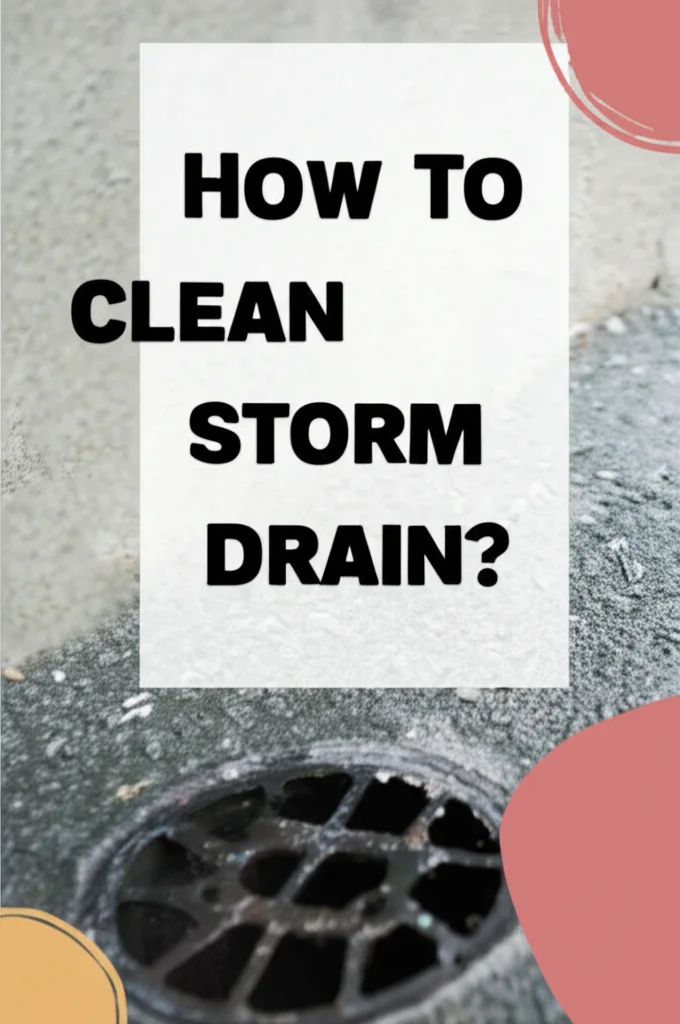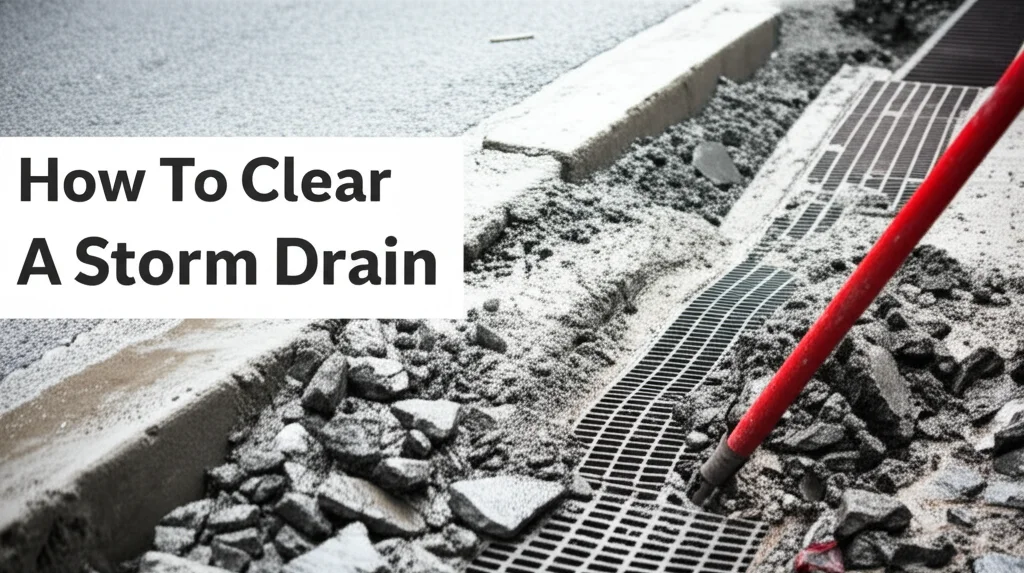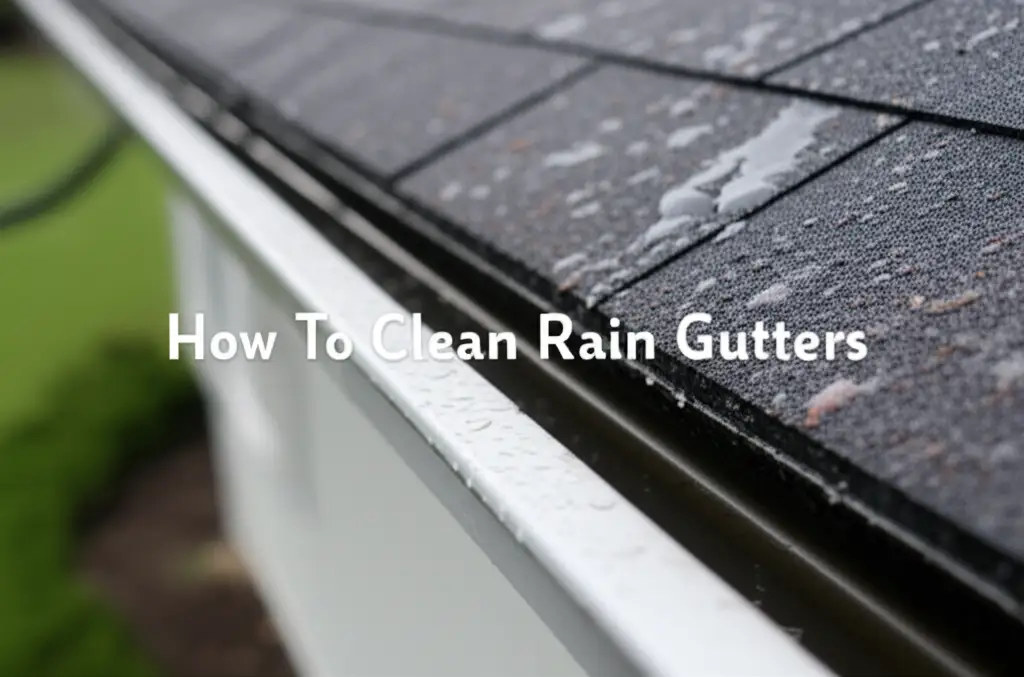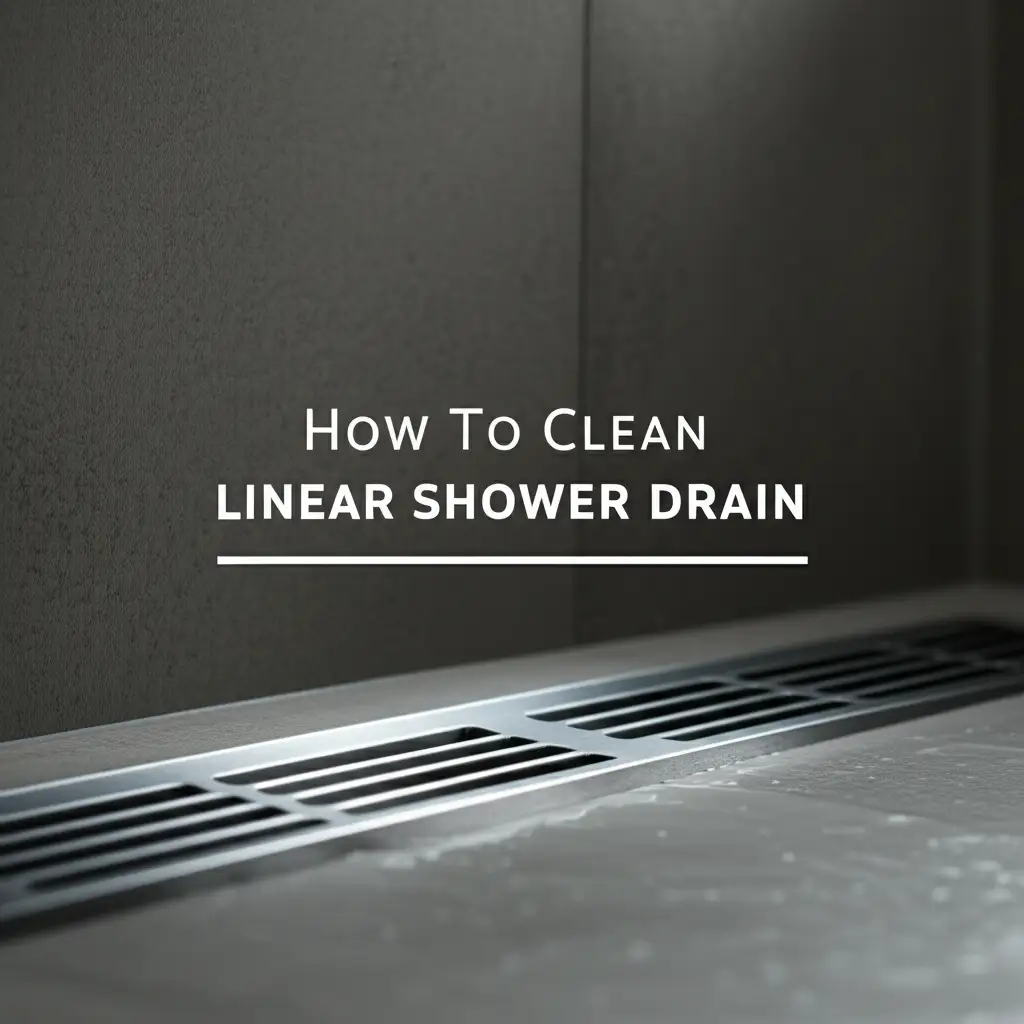· Home Maintenance · 7 min read
How To Clean Storm Drain?

Keeping Water Flowing: How To Clean a Storm Drain
Have you noticed water pooling around your street after a rainstorm? A clogged storm drain is often the culprit. It’s a common issue, but thankfully, cleaning a storm drain isn’t usually a complicated task. This article will guide you through how to clean storm drains safely and effectively, ensuring proper water drainage and preventing potential flooding. We’ll cover everything from the tools you’ll need to the precautions you should take, and even how to prevent clogs in the first place. Let’s get started and keep our neighborhoods flowing smoothly!
Quick Answer: To clean a storm drain, remove debris like leaves, trash, and sediment using gloves, a sturdy tool like a rake or scoop, and a bucket. Always prioritize safety by wearing protective gear and avoiding contact with potentially hazardous materials.
Takeaway:
- Regularly remove debris from storm drains.
- Wear protective gear like gloves and boots.
- Dispose of collected debris properly.
Why Cleaning Storm Drains Matters
Storm drains are vital for managing rainwater runoff, preventing flooding, and protecting our communities. When these drains become clogged with leaves, trash, and other debris, water can’t flow properly. This leads to street flooding, potential property damage, and even safety hazards. Think of it like a blocked artery – it restricts flow and causes problems. Keeping storm drains clear is a simple yet impactful way to contribute to a safer and drier environment for everyone. Ignoring this maintenance can lead to costly repairs and significant inconvenience.
Essential Tools for Storm Drain Cleaning
Before you begin, gathering the right tools will make the job much easier and safer. You don’t need a lot of specialized equipment, but having the basics on hand is crucial. Here’s a checklist of what you’ll need:
- Gloves: Heavy-duty work gloves are essential to protect your hands from dirt, bacteria, and sharp objects.
- Boots: Waterproof boots will keep your feet dry and protected.
- Rake or Scoop: A sturdy rake or scoop is ideal for removing loose debris from the drain. A long-handled tool is helpful for reaching deeper into the drain.
- Bucket: You’ll need a bucket to collect the debris you remove.
- Trash Bags: For disposing of the collected waste.
- Flashlight: Useful for inspecting the drain in low-light conditions.
- Safety Vest (Optional): If working near traffic, a safety vest will increase your visibility.
- Dust Mask (Optional): If you suspect mold or mildew, a dust mask can protect your lungs.
Safety First: Precautions to Take
Cleaning storm drains can expose you to potential hazards, so safety should be your top priority. Always be mindful of your surroundings and take the necessary precautions. Here’s what you need to keep in mind:
- Traffic Awareness: Be extremely cautious of traffic, especially if the drain is located near a road. Wear a safety vest if necessary.
- Hazardous Materials: Storm drains can contain pollutants like oil, chemicals, and bacteria. Avoid direct contact with these materials.
- Sharp Objects: Be careful of sharp objects like glass, metal, and plastic that may be hidden within the debris.
- Confined Space: Never enter a storm drain. These spaces can be dangerous due to low oxygen levels and potential flooding.
- Weather Conditions: Avoid cleaning storm drains during heavy rain or thunderstorms.
- Animal/Insect Life: Be aware of potential animal or insect life that may inhabit the drain.
Step-by-Step Guide to Cleaning a Storm Drain
Now that you have your tools and safety precautions in mind, let’s get to the cleaning process. Follow these steps for a thorough and effective clean:
- Inspect the Drain: Use a flashlight to inspect the drain and assess the amount and type of debris present.
- Remove Loose Debris: Using your rake or scoop, carefully remove any loose debris from the drain opening. Place the debris into your bucket.
- Reach Deeper (Carefully): If debris is further down the drain, carefully reach in with your rake or scoop to remove it. Avoid reaching too far, and never enter the drain itself.
- Flush with Water (Optional): If possible, use a garden hose to flush the drain with water to help dislodge any remaining debris. Be mindful of where the water is flowing.
- Dispose of Debris Properly: Place the collected debris into trash bags and dispose of it properly. Do not dump debris back into the storm drain or nearby waterways.
- Repeat as Needed: If the drain is heavily clogged, you may need to repeat the process several times.
Preventing Future Clogs: Proactive Measures
Cleaning a storm drain is a reactive solution. Preventing clogs in the first place is even better! Here are some proactive measures you can take:
- Keep Leaves and Grass Clippings Away: Avoid sweeping leaves and grass clippings into the street. These are major contributors to storm drain clogs.
- Properly Dispose of Trash: Always dispose of trash properly in designated receptacles.
- Report Illegal Dumping: If you witness illegal dumping near a storm drain, report it to your local authorities.
- Educate Your Neighbors: Encourage your neighbors to participate in storm drain maintenance and prevention efforts.
- Consider a Drain Cover: In areas prone to debris buildup, consider installing a drain cover to help filter out larger items. You can find more information about drain covers at your local hardware store.
Dealing with Stubborn Clogs
Sometimes, a simple removal of debris isn’t enough to clear a stubborn clog. If you’ve tried the steps above and the drain is still clogged, here are a few things you can try:
- High-Pressure Water: A pressure washer with a nozzle designed for drains can sometimes dislodge stubborn clogs. Use caution and follow the manufacturer’s instructions.
- Plumbing Snake: A plumbing snake (also known as an auger) can be used to break up or retrieve clogs that are further down the drain.
- Call a Professional: If you’re unable to clear the clog yourself, it’s best to call a professional plumber or your local public works department. They have the tools and expertise to handle more complex clogs. Don’t hesitate to seek professional help if you’re unsure or uncomfortable.
FAQ About Storm Drain Cleaning
Q: Is it illegal to clean a storm drain myself?
A: Generally, it’s not illegal to clean a storm drain yourself, but it’s always best to check with your local authorities to confirm. Some municipalities may have specific regulations regarding storm drain maintenance.
Q: What should I do if I find hazardous materials in a storm drain?
A: Do not attempt to handle hazardous materials yourself. Contact your local environmental protection agency or public works department immediately.
Q: How often should I clean storm drains near my property?
A: It depends on your location and the amount of debris buildup. A good rule of thumb is to check and clean storm drains at least twice a year – once in the fall after the leaves have fallen and once in the spring after the snow has melted.
Q: Can I use chemicals to dissolve clogs in storm drains?
A: It’s generally not recommended to use chemicals in storm drains. Chemicals can pollute waterways and harm aquatic life.
Conclusion: A Small Effort, A Big Impact
Cleaning storm drains is a simple yet crucial task that contributes to the overall health and safety of our communities. By following the steps outlined in this guide, you can effectively clear clogged drains, prevent flooding, and protect our environment. Remember to prioritize safety, use the right tools, and take proactive measures to prevent future clogs. A little effort goes a long way in keeping our neighborhoods flowing smoothly. So, take a look around your area, identify any clogged storm drains, and do your part to keep the water moving! You’ll be making a positive impact on your community and helping to prevent potential problems down the road.
- storm drain cleaning
- clogged drain
- gutter cleaning




